Are you a beginner at horseback riding and looking for some essential tips to get started? Well, you’ve come to the right place! In this article, we will discuss 10 essential tips for horseback riding beginners that will help you feel confident and safe in the saddle. So, whether you’re planning to take up horseback riding as a hobby or you’re preparing for your first trail ride, this article will provide you with the valuable information you need to know. But wait, there’s more! At the end of the article, we have included 10 frequently asked questions about horseback riding, along with their answers, so you can gain even more knowledge about this exciting activity.
First and foremost, it’s important to find a qualified instructor who can teach you the basics of horseback riding. They will help you learn how to properly mount and dismount a horse, as well as how to hold the reins and sit in the saddle. Additionally, they will teach you how to communicate with the horse using your body language and cues. Having a good instructor by your side can make all the difference in your riding journey. In addition to finding an instructor, it’s crucial to wear the right safety gear. This includes a properly fitted helmet, riding boots with heels, and comfortable clothing that allows you to move freely. Safety should always be your top priority when it comes to horseback riding. So, if you’re ready to dive into the world of horseback riding, keep reading because we’re about to share some more valuable tips that will make your experience even better!
10 Essential Tips for Horseback Riding Beginners
Are you a horseback riding beginner looking to embark on a new and exciting journey? Horseback riding is not only a thrilling hobby but also an excellent way to connect with these majestic creatures. As you begin your horseback riding adventure, it’s crucial to equip yourself with the knowledge and skills needed to ensure a safe and enjoyable experience. In this article, we will share ten essential tips that every beginner should know before saddling up.
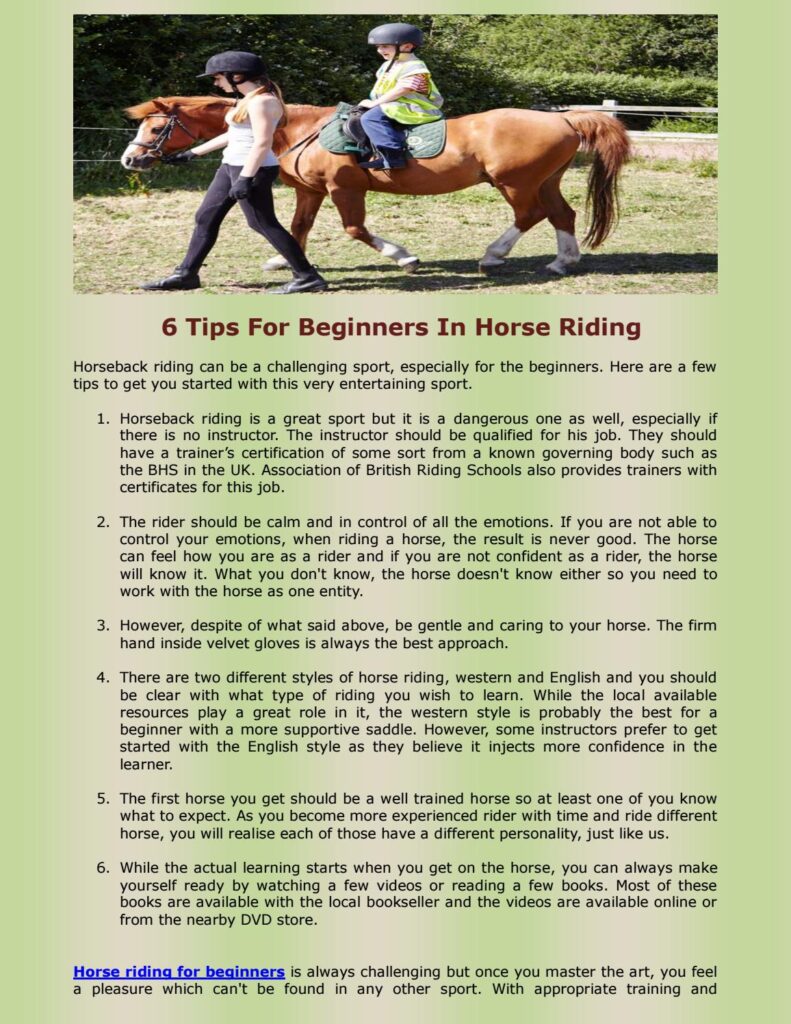
Equipment and Safety Gear
Choosing the Right Helmet
One of the most crucial pieces of equipment for any rider is a properly fitting helmet. Your helmet should meet safety standards and fit snugly on your head, providing full coverage and protection. Make sure to try on different helmets to find the one that feels comfortable and secure.
Selecting Proper Riding Boots
Investing in a pair of suitable riding boots is essential for your safety and comfort. Riding boots should have a small heel to prevent your feet from slipping through the stirrups. Look for boots that offer ankle support and a firm grip on the stirrups.
Understanding the Importance of a Good Saddle
A well-fitted saddle is crucial for both the rider’s and the horse’s comfort. It should distribute the rider’s weight evenly and allow for proper leg positioning. Consult with an experienced professional to determine the right saddle size and type for you.
Using Protective Gear: Riding Gloves and Goggles
While optional, wearing riding gloves and goggles can provide added protection and improve your grip. Riding gloves can prevent blisters and provide better rein control, while goggles shield your eyes from dust, debris, and branches while riding on trails.
Purchasing Riding Attire: Essential Clothing for Beginners
Wearing appropriate riding attire not only enhances your comfort but also ensures your safety. Opt for comfortable and breathable clothing that allows for ease of movement. Avoid loose-fitting clothes that may get caught on equipment.
Mounting and Dismounting
Learning the Correct Mounting Techniques
Before getting on the horse, it’s crucial to learn the correct mounting techniques to ensure a smooth and safe transition. Start by standing on the left side of the horse, facing the same direction. Grasp the reins with your left hand and place your left foot in the left stirrup. Push yourself up with your left leg while swinging your right leg over the horse’s back.
Practicing Proper Dismounting Procedures
Just as important as mounting is knowing how to dismount safely. To dismount, bring your horse to a complete stop. Shift your weight to your left foot and swing your right leg over the horse’s back, gently landing on the ground. Always dismount on the left side of the horse.
Understanding the Importance of Balance During Mounting and Dismounting
Maintaining balance while mounting and dismounting is crucial to prevent accidents and ensure a smooth transition. Keep your body weight centered and avoid pulling on the horse’s mane or saddle for support. Developing good balance will make mounting and dismounting feel effortless over time.
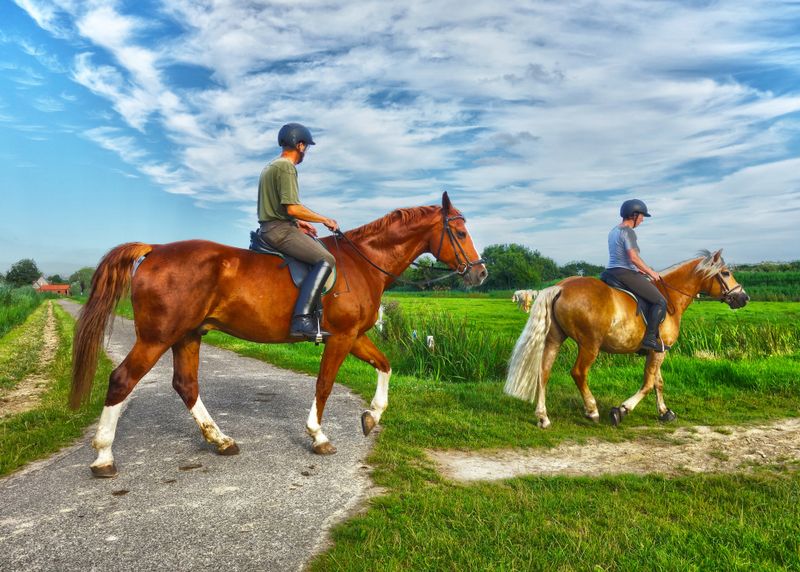
Basic Riding Techniques
Mastering the Correct Sitting Position
Achieving a correct sitting position is essential for maintaining balance and effectively communicating with your horse. Sit up straight, aligning your ears, shoulders, hips, and heels. Relax your legs and keep them in contact with the horse’s sides.
Developing Effective Rein Skills
Reins are your primary means of communication with your horse. Learn to hold the reins correctly – one rein in each hand, with a soft but firm grip. Practice applying light and consistent pressure to communicate cues to your horse effectively.
Learning to Communicate with the Horse Through Leg Aids
Leg aids are essential for guiding your horse’s movement. Learn to use your legs independently to ask your horse to move forward, turn, or stop. Lightly squeeze your horse’s sides with your legs to ask for more forward motion and apply pressure behind the girth to ask for turns or lateral movements.
Understanding the Basic Riding Gaits: Walk, Trot, and Canter
Familiarize yourself with the basic riding gaits: walk, trot, and canter. The walk is a slow and relaxed gait, the trot is a two-beat diagonal gait with a bouncing motion, and the canter is a controlled three-beat gait. Practice transitioning smoothly between these gaits to improve your riding skills.
Maintaining a Proper Posture and Balance While Riding
Good posture and balance are essential for a safe and enjoyable riding experience. Keep your torso upright, engage your core muscles, and relax your shoulders. Distribute your weight evenly over your seat bones and maintain a deep, relaxed seat.
Building a Strong Bond with Your Horse
Gaining the Trust of Your Horse
Building trust with your horse is essential for a successful partnership. Spend time bonding with your horse through grooming, leading, and spending quality time together. Be patient, kind, and consistent in your interactions.
Establishing Effective Communication
Effective communication is key to building a strong bond with your horse. Learn to understand your horse’s body language and respond to their cues appropriately. Develop a language of trust and respect through consistent and clear communication.
Building a Solid Partnership Through Groundwork Exercises
Groundwork exercises are an excellent way to build trust, respect, and communication with your horse. Engage in activities such as lunging, desensitization, and obstacle courses to establish a solid foundation and develop a deeper connection with your horse.
Understanding the Horse’s Body Language and Behavioral Cues
Horses communicate through body language and behavioral cues. Learn to interpret your horse’s signals, such as ear position, tail swishing, and overall demeanor. Understanding how your horse communicates will enhance your ability to respond effectively.
Developing a Mutual Relationship Based on Respect and Trust
A successful partnership with your horse is built on mutual respect and trust. Treat your horse with kindness and fairness, and always prioritize their well-being. As you develop a strong bond of trust, your horse will become more willing and responsive.
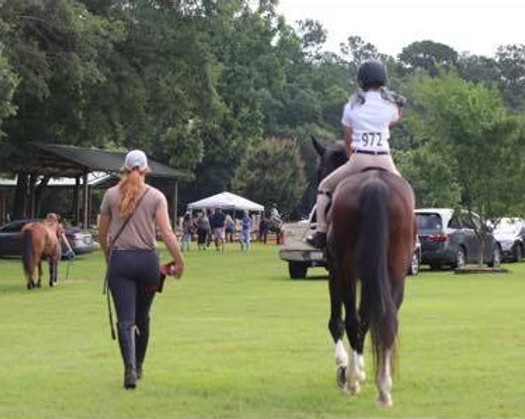
Proper Handling and Grooming
Learning How to Lead and Tie a Horse
Proper handling techniques are essential for your safety and your horse’s well-being. Learn how to lead a horse correctly, keeping a safe distance and using gentle guidance. Practice tying your horse to secure posts or hitching rails using a quick-release knot.
Understanding Basic Horse Care and Grooming Techniques
Regular grooming is essential to keep your horse looking and feeling his best. Learn basic grooming techniques, such as brushing, picking hooves, and mane and tail care. Regular grooming not only promotes cleanliness but also helps you build a closer relationship with your horse.
Recognizing the Signs of Equine Discomfort or Illness
As a responsible rider, it’s crucial to be attentive to your horse’s well-being. Familiarize yourself with the signs of equine discomfort or illness, such as lethargy, changes in appetite, or lameness. Seek veterinary assistance if you notice any unusual behavior or physical symptoms.
Knowing How to Safely Approach and Handle a Horse
Approaching and handling horses correctly is crucial to prevent accidents and maintain trust. Approach your horse calmly from the front, making sure they are aware of your presence before touching them. Be mindful of their personal space and avoid sudden movements.
Developing a Routine for Regular Grooming and Maintenance
Establishing a grooming routine is essential for your horse’s health and well-being. Set aside dedicated time for grooming, including brushing, mane and tail care, and hoof cleaning. Regular grooming sessions not only keep your horse clean but also allow you to monitor their overall health.
Trail Riding Tips
Choosing the Appropriate Trail for Your Skill Level
When venturing out on a trail ride, choose routes suitable for your skill level. Start with easy, well-marked trails and gradually progress to more challenging terrain as your riding skills improve. Research local trails or consult with experienced riders for recommendations.
Navigating Obstacles and Terrain Challenges
Trail riding often involves encountering various obstacles and terrain challenges. Learn to navigate through obstacles such as logs, water crossings, and uneven terrain. Approach obstacles with confidence and maintain a steady pace, allowing your horse to assess the situation.
Understanding Trail Etiquette and Safety Guidelines
Respect trail etiquette and follow safety guidelines to ensure a pleasant experience for yourself and fellow riders. Yield to hikers and bikers, maintain a safe distance from other horses, and proceed at a suitable pace for the trail conditions.
Preparing for Long Trail Rides: Essential Supplies and Equipment
If you plan to embark on long trail rides, proper preparation is key. Pack essential supplies such as water, snacks, a first aid kit, and a cell phone. Ensure your horse is adequately outfitted with the necessary equipment, including saddlebags for carrying supplies.
Managing Emergency Situations on the Trail
Despite careful planning, emergencies can occur while out on the trail. Be prepared to handle situations such as a loose horse, a rider falling off, or a horse spooking. Carry an emergency whistle, a knife, and a basic first aid kit to handle unexpected scenarios.
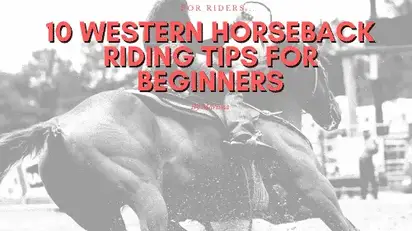
Understanding Horse Behavior
Interpreting Equine Body Language
Horses communicate primarily through body language. Learn to interpret your horse’s signals, such as ear position, tail movements, and overall body posture. Understanding your horse’s body language will help you anticipate their reactions and respond appropriately.
Recognizing Common Behavioral Patterns in Horses
Horses exhibit certain behavioral patterns based on their instincts and past experiences. Recognize signs of behavior such as herd dynamics, flight responses, and dominance displays. Understanding these patterns will enable you to better connect with and guide your horse.
Understanding the Hierarchy and Social Structure within a Horse Herd
Horses are social animals with a hierarchical herd structure. Understand the dynamics of a horse herd, including the roles of dominant and submissive horses. This knowledge will help you work with your horse in harmony, respecting their innate behaviors.
Identifying Signs of Stress or Anxiety in Horses
Just like humans, horses can experience stress and anxiety. Learn to recognize signs such as pawing, sweating, tail-swishing, or pinned ears. Take steps to alleviate their stress through patient training, consistent routines, and creating a calm environment.
Developing a Deeper Connection through Understanding Horse Psychology
Deepen your bond with your horse by understanding their psychology. Learn about their natural behaviors, social instincts, and cognitive capabilities. This knowledge will enhance your ability to communicate effectively and build a trusting relationship.
Horse Health and Care
Implementing Proper Feeding and Nutrition
Proper nutrition is vital for your horse’s overall health and well-being. Consult with a veterinarian or equine nutritionist to develop a balanced diet based on your horse’s age, weight, and activity level. Ensure access to clean water at all times.
Recognizing Signs of Illness or Injury
Regularly monitor your horse for any signs of illness or injury. Common signs include changes in appetite, weight loss, lameness, or abnormal behavior. Consult with a veterinarian promptly if you notice any abnormal symptoms.
Administering Basic First Aid for Horses
Basic knowledge of first aid for horses is essential for any rider. Learn how to clean wounds, apply bandages, and assess vital signs. Keep a well-stocked equine first aid kit readily available, including items such as disinfectant, bandages, and wound ointments.
Understanding the Importance of Regular Veterinary Check-ups
Regular veterinary check-ups are crucial for maintaining your horse’s health. Schedule routine visits for vaccinations, dental care, and overall wellness examinations. Regular veterinary care ensures early detection of any health concerns and timely intervention.
Maintaining a Clean and Comfortable Living Environment for Your Horse
Provide your horse with a clean and comfortable living environment. Regularly clean stalls, remove manure, and provide fresh bedding. Ensure access to clean water and appropriate shelter from extreme weather conditions.
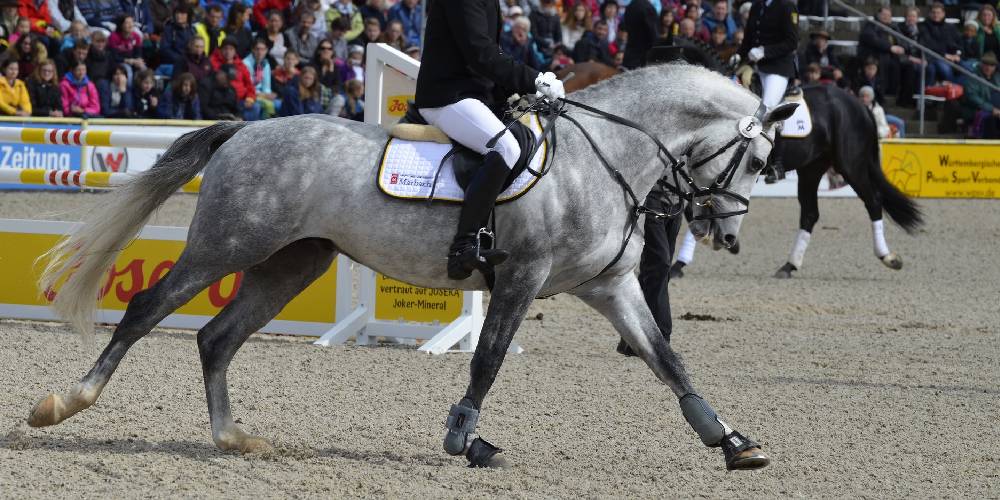
Riding Exercises and Drills
Improving Balance and Coordination through Gymnastic Exercises
Engage in gymnastic exercises to improve your balance and coordination while riding. Practice exercises such as posting trot, two-point position, and riding without stirrups. These exercises will strengthen your core muscles and enhance your riding skills.
Practicing Transitions: Trot to Walk, Canter to Trot
Mastering smooth transitions between gaits is essential for effective riding. Practice transitioning from trot to walk and from canter to trot, focusing on maintaining your balance and communicating cues effectively. Smooth transitions will make your riding more fluid and polished.
Developing Core Strength and Flexibility through Riding Drills
Riding drills that focus on strengthening your core muscles and improving flexibility will enhance your riding skills. Incorporate exercises such as circles, serpentines, and figure eights into your riding routine. These exercises engage your core muscles and improve your overall balance.
Working on Straightness and Collection
Straightness and collection are fundamental aspects of riding. Practice riding in straight lines while maintaining your horse’s alignment. Work on achieving collection, where your horse carries more weight on their hindquarters and responds to subtle cues.
Training for Specific Disciplines: Dressage, Jumping, Western Riding
If you have a specific discipline in mind, tailor your training accordingly. Dressage focuses on precision and obedience, jumping emphasizes agility and accuracy, while western riding emphasizes balance and responsiveness. Seek guidance from experienced trainers to enhance your skills in your chosen discipline.
Trailering and Traveling with Horses
Loading and Unloading Your Horse from a Trailer
Knowing how to safely load and unload your horse from a trailer is essential for travel. Practice gradual desensitization and use positive reinforcement techniques. Take your time, be patient, and make the experience as stress-free as possible for your horse.
Securing Horses during Transportation
During transportation, ensure your horse is safely secured to prevent injury and discomfort. Use properly fitted halters, lead ropes, and trailer ties. Provide adequate padding in the trailer and consider using shipping boots or wraps for added protection.
Preparing for Long-distance Travel: Essential Tips and Checklist
Long-distance travel requires careful planning and preparation. Ensure your horse is well-hydrated and has access to hay during the journey. Make frequent stops to allow for rest and provide ample ventilation in the trailer. Check local regulations and acquire any necessary paperwork or permits for interstate or international travel.
Knowing the Laws and Regulations for Transporting Horses
Familiarize yourself with the laws and regulations governing horse transportation. Some jurisdictions have specific requirements for health certificates, brand inspections, or quarantine periods. Stay informed and ensure compliance to avoid any legal issues while traveling with your horse.
Ensuring Safety and Comfort during Travel
Safety and comfort should be prioritized during horse travel. Regularly inspect your trailer for any signs of damage or wear. Maintain appropriate tire pressure and check the condition of brakes and lights. Safeguard against extreme temperatures and provide adequate ventilation.
Dealing with Common Riding Challenges
Overcoming Fear and Building Confidence
Many beginners struggle with fear or anxiety while horseback riding. Take small steps, gradually exposing yourself to new experiences and challenging situations. Seek guidance from experienced riders or consider working with a qualified instructor to build confidence in a supportive environment.
Addressing Issues of Spooking or Bolting
Spooking or bolting can be intimidating and dangerous. Work on desensitizing your horse to various stimuli in a controlled environment. Gradually expose them to new sights, sounds, and objects to build their confidence and trust in your guidance.
Dealing with Bucking or Rearing Behaviors
Bucking or rearing behaviors should be addressed promptly and safely. Seek professional assistance from a qualified trainer to determine the underlying causes and develop a proper training program. Safety is paramount, and addressing these behaviors requires expertise and experience.
Managing Communication Problems with Your Horse
Effective communication is vital in horseback riding. If you encounter communication problems, seek assistance from an experienced trainer or instructor. They can help identify any misunderstandings or inconsistencies and guide you in refining your communication skills.
Developing Problem-solving Skills for Riding Challenges
Horseback riding presents various challenges, and problem-solving skills are essential to overcome them. Develop patience, adaptability, and a calm demeanor when faced with unexpected situations. Learn from each challenge and seek guidance when needed.
Riding Etiquette and Rules
Understanding Proper Arena Etiquette
When riding in an arena or riding facility, observe proper etiquette to ensure a safe and harmonious environment. Respect fellow riders and their space, communicate clearly when passing or changing directions, and follow any specific arena rules or guidelines.
Respecting Other Riders’ Space and Safety
Respecting other riders’ space and safety is crucial for everyone’s well-being. Maintain a safe distance from other horses, pass at a safe speed and distance, and communicate your intentions to those around you. Always prioritize safety and be mindful of others.
Following Trail Riding Rules and Regulations
When trail riding, adhere to trail riding rules and regulations to preserve the environment and promote safety. Stick to designated trails, avoid littering, and respect any wildlife or conservation areas. Follow any specific trail rules or guidelines set by local authorities.
Adhering to Show Ring Protocol and Sportsmanship
If you plan to participate in horse shows or competitions, familiarize yourself with show ring protocol and sportsmanship expectations. Respect the judges, fellow competitors, and their horses. Display good sportsmanship and congratulate others, regardless of the outcome.
Knowing the Basic Rules for Competitions and Events
Competitions and events often have specific rules and regulations. Familiarize yourself with the basic rules for your chosen discipline or event. Understand scoring criteria, tack requirements, and any guidelines that govern your participation. Compliance ensures a fair and enjoyable experience for all.
Nutrition and Fitness for Riders
Maintaining a Healthy Diet and Hydration Routine
As a rider, it’s essential to maintain a healthy diet and hydration routine. Opt for nutritious meals rich in lean proteins, fruits, vegetables, and whole grains. Stay hydrated by drinking water regularly, especially before and after riding.
Improving Strength and Flexibility for Riding
Improving strength and flexibility will enhance your riding abilities. Incorporate exercises such as yoga, Pilates, or weight training into your routine. Focus on strengthening your core, legs, and upper body to improve stability and balance in the saddle.
Practicing Cardiovascular Exercises to Enhance Endurance
Good cardiovascular fitness is vital for endurance and stamina while riding. Engage in aerobic activities such as jogging, cycling, or swimming to improve your cardiovascular health. Aim for at least 150 minutes of moderate-intensity exercise per week.
Building Core Muscles for Stability and Balance
A strong core is essential for maintaining stability and balance while riding. Incorporate exercises that target your abdominal and lower back muscles, such as planks or Russian twists. A strong core will help you stay centered and connected with your horse.
Understanding the Impact of Rider Fitness on Horse Performance
Your fitness level directly impacts your horse’s performance. Being fit and balanced in the saddle enables you to communicate cues effectively and maintain proper posture. Additionally, a fit rider can better support their horse’s movements, leading to improved overall performance.
Conclusion
Embarking on the journey of horseback riding as a beginner is an exciting and rewarding experience. By following these ten essential tips, you will set yourself up for success and enjoy a safe and fulfilling riding adventure. Remember to always prioritize safety, communication, and the welfare of your horse. Embrace the joy and freedom that horseback riding brings and continue to learn, grow, and build a lasting bond with these magnificent creatures.
Common Questions about Horseback Riding
-
What is the right helmet size for horseback riding?
- The right helmet size for horseback riding should fit snugly on your head and meet safety standards. Consult with a professional to determine the proper size for your head shape.
-
How do I choose the right riding boots?
- When choosing riding boots, look for a pair that has a small heel, offers ankle support, and provides a firm grip on the stirrups. Ensure they are comfortable and offer flexibility for proper movement.
-
How often should I groom my horse?
- Regular grooming is essential for your horse’s health and well-being. Aim to groom your horse at least once a day, focusing on brushing, hoof cleaning, and mane and tail care.
-
What are some signs of a happy and healthy horse?
- Signs of a happy and healthy horse include alertness, a shiny coat, clear eyes, and a good appetite. They will also exhibit relaxed body language and willingly interact with their humans.
-
How do I know if my horse is stressed or anxious?
- Horses may display signs of stress or anxiety through behaviors such as pawing, sweating, tail-swishing, or pinned ears. They may also exhibit changes in appetite or restlessness. Pay attention to your horse’s body language and consult with a professional if you have concerns.
-
What should I do if my horse spooks or bolts?
- If your horse spooks or bolts, try to remain calm and avoid pulling tightly on the reins. Use your legs and seat to regain control, redirecting your horse’s attention to you and calmly bring them back to a walk or halt.
-
How can I become a more confident rider?
- Building confidence as a rider takes time and practice. Start with beginner-friendly horses, take lessons with a qualified instructor, and gradually expose yourself to different riding environments. Focus on developing a deep understanding of horse behavior and communication.
-
What should I do if my horse bucks or rears?
- Bucking or rearing behaviors can be dangerous and should be addressed with professional guidance. Consult with a qualified trainer to identify the underlying causes and develop a plan to address these behaviors safely.
-
How can I improve my balance and coordination while riding?
- Improving balance and coordination takes practice and exercises such as riding without stirrups, two-point position, and exercises that engage your core muscles. Incorporate these exercises into your riding routine to enhance your balance and coordination.
-
How do I maintain a healthy diet and fitness routine as a rider?
- As a rider, maintaining a healthy diet and fitness routine is essential. Focus on nutritious meals, drink water regularly to stay hydrated, and engage in cardiovascular exercises, strength training, and flexibility exercises to improve your overall fitness.
